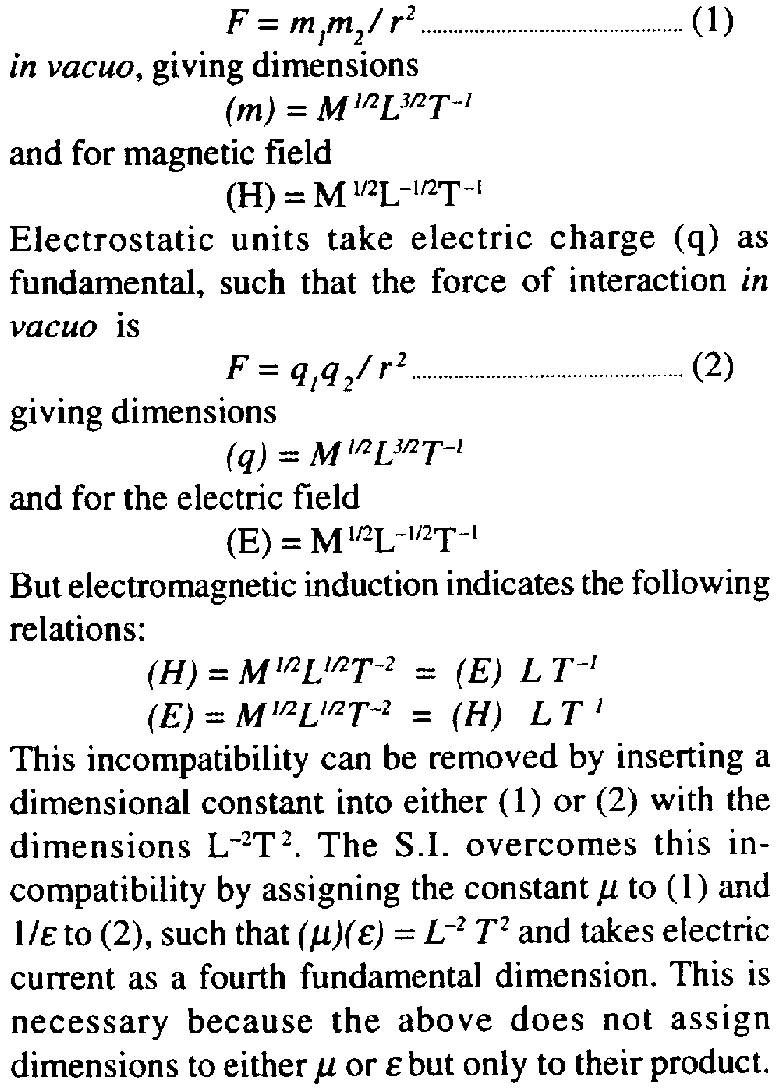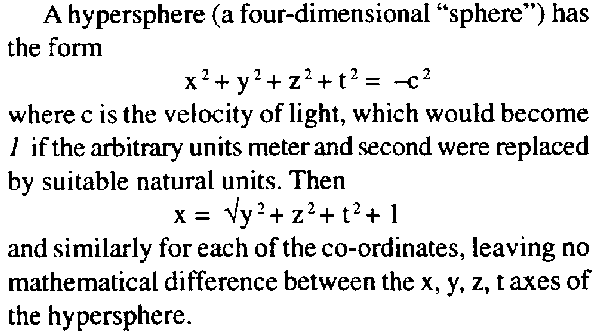 |
| Home |Introduction | Books & Papers | Animations | Expansion Sites | Science Links | Download |
Dimensions
of the Velocity of light
The following statement by Dr. W. D. Parkinson is repeated from the 1981 Sydney Symposium on the Expanding Earth.
 |
The dimensional equivalence of distance and time is implied by the null Universe, because every increment of mass implies an equal increment of energy, that is, mass M equals energy ML2T-2. Cancelling M leaves L2=T2.
An important
consequence of Parkinson's simplification also is that mass, momentum,
and potential energy have the same dimensions. The significance of this
revision goes far beyond the elegant removal of the incompatibility of
the electromagnetic and electrostatic units, which hitherto had been adjusted
by an arbitrary improbable fiddle. Indeed, the dimensional equivalence
of length and time is implied by the four-dimensional space-time of relativity,
where time and distance are interchangeable; whereas the co-ordinates were
written in the form, x, y, z,
and i ct (i is the imaginary square root of minus
one which appears in the four-dimensional equations); t
now has the same dimensions as the other three, c is a pure
number, and i is attachable equally to any one of the four.
 |
The reduction of fundamental dimensions from four to two is a step towards Eddington's philosophical hope of linking universal constants to reduce their number, hopefully to a mutually cancelling pair, and towards Milne's ideal cosmology which has no constants with dimensions, and also towards Einstein's faith that all universal constants should have logical inevitability, and that no dimensionless constants should be arbitrary.
By Parkinson's simplification, the velocity of light c becomes a pure number like p and e, whose values are absolutely determined, p geometrically, and e arithmetically. Two pure numbers, the velocity of light and absolute zero, are the physical limits of existence, because mass, energy, temperature, resistivity, viscosity, and entropy tend toward infinity as velocity tends toward c, and at absolute zero all except mass-energy become zero, and it is not clear what happens to mass-energy at this singularity. Perhaps they mutually cancel to zero, making "absolute zero" truly absolute.